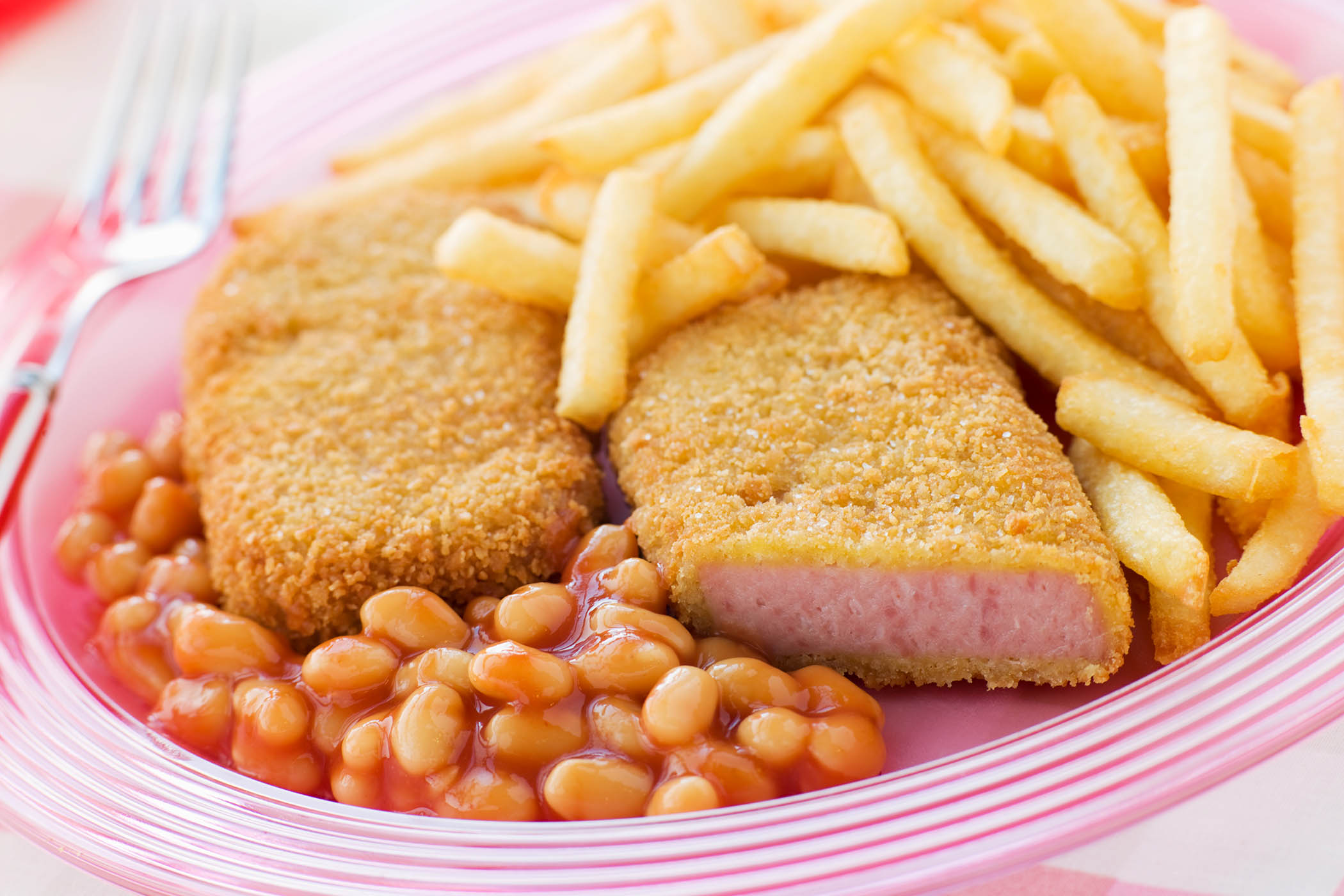I remember a friend asking what lunch was like at my new school, and answering, to her sage nod, “orange”. There were beans, and fish fingers, and beans and fish fingers, and a tomato pasta, which I guess, officially, was red, but the food was at best “warm” and at worst poison – when I was nine I vomited in the canteen upon being forced to eat Spam (pink).
My daughter has just started year seven, and school lunches have changed significantly since the Spam days – for one thing, they’re quite nice; for another, kids pay for their food using a fingerprint, which means parents idly track what they eat each day and nobody has to announce if they’re on free meals. In the evenings they proudly regale us with tales of their adventures at the salad bar.
All of which is thrilling, but might be more so had I not already glimpsed this new world of school lunches in my own home. There is an organisation called Chefs in Schools that was set up to support schools in improving their food education and, crucially, their food, by recruiting excellent chefs to cook school meals from scratch. My partner, Mark, used to have a restaurant in London – this year he took a job working under a fine-dining chef in the kitchen of our local school. He comes home now every day knackered but vaguely radicalised.
As well as a worthy community project (where they do things like every Tuesday encouraging students to try something new like “radicchio” or “miyagawa mandarins”), these elevated school kitchens seem to be a landing point for chefs with families who are no longer able, or willing, to work relentless restaurant hours. In the olden days I’d see Mark in brief snatches of evening – he worked double shifts, sometimes triple, the occasional bleak little Sunday.
The life of a chef, we realised bickeringly as our family grew, was not consistent with that of a father of two. So the hours were the thing that grabbed his interest at first, rather than the project itself, the project of introducing beetroot cake and wild garlic pesto to a thousand uniformed kids, the project of de-Turkey Twizzlering our town. It was the fact he’d be home before 3pm every day.
I’m imagining The Bear but times 200 and in the suburbs of London as he briskly slings out 600 portions of pasta
And for me, an unexpected bonus is that sometimes he brings back leftovers. I usually clatter in from the office right as he’s serving our kids a glammed-up version of what they cooked at school the day before, scraps they aren’t allowed to reuse or give away – delicate butternut and chickpea curries, or slices of miso aubergine with a modest plop of spinach. One of his colleagues sends him home with paper bags full of pakora, and while there are never, ever leftovers of the blueberry muffins, sometimes he’ll make a little batch at the weekend, just for us.
I like to hear about the sheer quantities of lunch he makes every morning, the two busy services, one at 12.15pm for the younger kids and another an hour later for the big ones, where (and here I’m imagining The Bear but times 200, and in the suburbs of London and with marginally less yearning) he will briskly sling out 600 portions of pasta and, bewilderingly, be called Sir.
Last year, visiting open days at local secondary schools with my daughter, I experienced a series of existential shocks triggered by nostalgia, the brutal architecture of adolescence and the many varied smells of chips. While artists are mucking about with immersive installations where visitors pay fifty quid to walk through, say, Van Gogh’s studio recreated in a well-lit shipping container and sip limoncello from, perhaps, a plastic ear, it turns out the ultimate immersive experience is walking in adulthood through a school at night.
Anxieties I thought I’d long ago extinguished reared up at the perfume of floor wax, dooms I hadn’t felt since I was a teenager returned as I smelled two tons of mashed potato fizzing under a hot light. I was immediately 13 again, awkward and hungry, though the hunger was obscure and complicated, a hunger not necessarily just for lunch, but for escape, adulthood, approval, pudding.
But then we were shown into what was once called home economics (a title that, shiveringly, reminds me of the deadly phrase “cost of living”) and is now food technology, and saw a glittering classroom lined with ovens where industrious students were serving warm banana bread. Suddenly, everything felt a little bit brighter. In my day, the food was a sodden add-on to the misery of school, but today there are efforts to integrate it into students’ lives, which instils in me a little joy. I might be the only adult eating school dinners for tea, but I don’t think I’m alone in feeling that these dinners bring a kind of hope.
Rachel Cooke is away
Photograph by Getty Images

